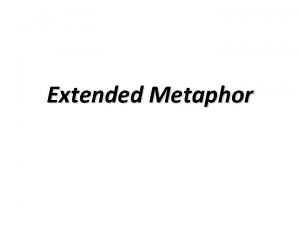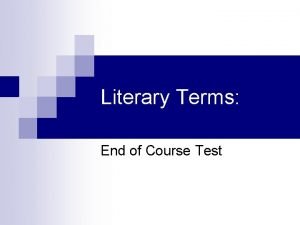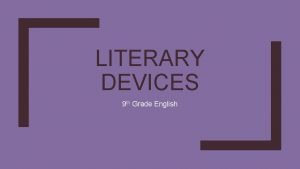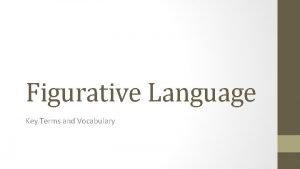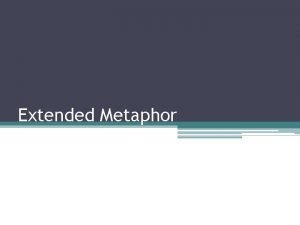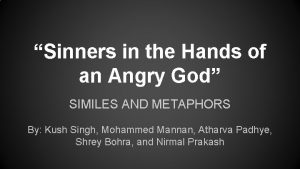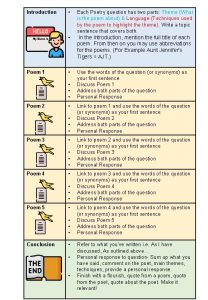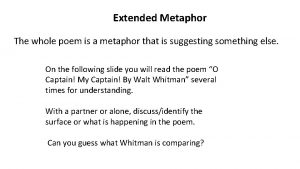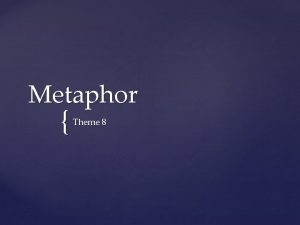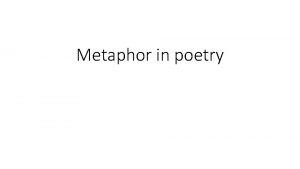Extended Metaphor Poem What is an extended metaphor









- Slides: 9

Extended Metaphor Poem

What is an extended metaphor? • Definition of Extended Metaphor • An extended metaphor, sometimes known as a conceit or sustained metaphor, is a metaphor that an author develops over the course of many lines or even an entire work of literature. An extended metaphor may act as a theme in the work of literature because it is repeated and changes forms as it reappears over and over again. Extended metaphors are complicated than a metaphor that an author only uses once in that extended metaphors more deeply explore the similarities between the original thing and the thing to which it is being compared.

Ok-give me an example

• I shall be telling this with a sigh Somewhere ages and ages hence: Two roads diverged in a wood, and I— I took the one less traveled by, And that has made all the difference.




Your Turn • Write an extended metaphor poem. Use one of the following sentence starters to get started. • Life is…. A middle school student is… A teacher is… My family is… My heart is… My dog is… My brother (or sister) is…Happiness is…Sadness is…A mountain is…The ocean is…Summer days are…Winter days are…Fall days are…Track season is…I am…Facebook is…Instagram is…My hands are…My body is…The soul is…The moon is…The sun is…A crime scene is…

Extended Metaphor Requirements • The metaphor needs to be carried throughout each stanza (poetic paragraph) • Alliteration needs to be used at least once, personification needs to be used at least once. Imagery needs to be used throughout (*must include all senses) • The comparison between the two objects needs to make a point to the reader. A larger message needs to be stated than what at first appears to the reader.
 Extended metaphor
Extended metaphor What is an extended metaphor?
What is an extended metaphor? Jargon definition and examples
Jargon definition and examples Extended metaphor literary device
Extended metaphor literary device Extended metaphor in i have a dream speech
Extended metaphor in i have a dream speech What's figurative language
What's figurative language Extended metaphor definition
Extended metaphor definition Hyperboles in romeo and juliet
Hyperboles in romeo and juliet Sinners in the hand of an angry god metaphors
Sinners in the hand of an angry god metaphors When was a quilt of a country written
When was a quilt of a country written

